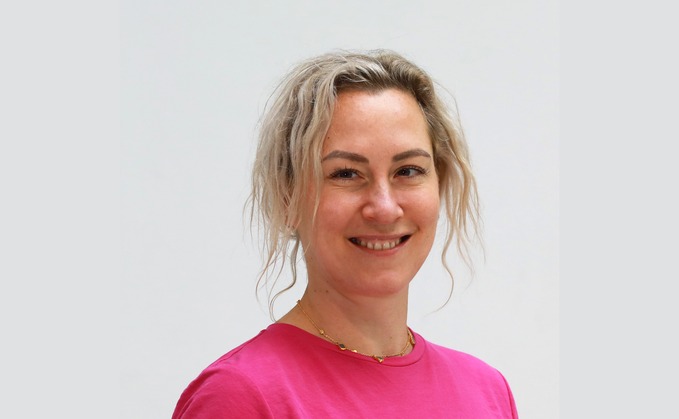
Julie Thompson - Scottish Widows
Before diving in, while most advisers will be aware of the key differences between the two, it's worth giving a brief overview. As you may expect, critical illness typically pays in the event your client is diagnosed with a serious illness, normally one that is pre-defined in severity, in the form of a one-off lump sum. In contrast, income protection typically offers an ongoing monthly payment to replace lost income, in the event your client is unable to work due to sickness or accident.
Apple vs. Android?
So which one should you be offering your client?
Starting with critical illness, or to keep this analogy going, ‘Apple,' the product tends to offer a straightforward user experience where once the claim is validated, your client can expect to receive their singular lump sum payment.
Equally, critical illness arguably offers greater (financial) security as payment is determined based on set definitions and as a product, it slots in easily with other ones such as life insurance, allowing you to build a portfolio of protection, or in Apple speak, it integrates seamlessly between iPhone and MacBook.
However, there are limitations.
The biggest being the list of serious illnesses covered are not infinite and it's likely there will be a severity criteria meaning payments are not guaranteed even if your clients are seriously unwell.
Also, the potential lack of ongoing financial support as once the lump sum is paid cover tends to end. This is particularly relevant when you understand that most cancer patients in the UK face an average additional cost of £891per month (1). Equally, while these policies may be sold with the intention of paying off an outstanding mortgage with the claim proceeds, the reality is only 19% of people go on to do this (2), choosing instead to use money towards a variety of other things such as medical treatments and home modifications, which suggests clients may see more value in using funds for ongoing support.
Finally, while we know that younger people do get seriously ill and do make successful claims for critical illness policies, the reality is that the average age for critical illness claims in Scottish Widows is 51 year old (3). While getting cover younger means locking in a lower premium, there needs to be a consideration given to the fact that people are reaching traditional protection milestones such as getting a mortgage much later in life. (The average age of a first-time buyer is now 32) (4)
Compare this with the fact there has been a notable increase by 140,000 people in the UK under the age of 35 being off on long term sick (greater than 4 weeks) which compares with just 32,000 for people aged 35-49 (5).
So, Android Right?
Taking all of this into consideration does raise the question, for younger people in particular, is critical illness always the right protection solution? Does this mean Android, sorry, income protection is the answer?
Well, it certainly has the advantage of providing an ongoing frequent income as opposed to a one-off payment, therefore, providing longer term support. While normally, you need to not be able to work due to illness or accident, there is no requirement for it to be due to a certain illness or type of accident, unlike critical illness, providing broader cover. This is particularly notable as according to NHS England, 21.7% of 20 to 25 year olds had a probable mental disorder in 2023 (6).
While this doesn't necessarily mean this would result in a claim, we know from the Association of British Insurers (ABI) that mental illness accounts for the highest value in claim payment of £37 million, with over 1,500 individuals having been in payment for over 10 years (7).
This indicates that income protection can play a crucial role in providing ongoing financial support.
Another angle that requires more airtime despite the fact it may not be the ‘sexiest' of subjects, is the positive impact income protection can have in respect of pensions, and potentially investments, particularly for those who claim in their formative years such as Gen Zer's. Not only could this insurance prevent the need to dip into pensions funds or savings, therefore preserving their existing pot, it may even allow the continuation of contributions to build a much-needed retirement fund.
Nothing is perfect.
Nevertheless, just like critical illness cover, income protection does come with its limitations, namely the fact that there will likely be a waiting period, termed deferred period, meaning that any claim is not payable until this period is over. This could be over a year depending on your client's sick pay arrangements, not an insignificant length of time. We also cannot lose sight of the fact that in general, income protection, can be more expensive than critical illness to reflect the ability for ongoing and multiple claims support -arguably more akin to Apple but this isn't a perfect analogy!
Making the Right Choice.
As mentioned, choosing between critical illness and income protection in terms of which one is better is hugely dependent on an individual's circumstances and financial ambitions. Just as Apple and Android allow you to do the basics, call, access internet etc. the equivalent for critical illness and income protection would be that they provide financial support if your client is incapacitated.
Therefore, if your client has specific needs and wants, drilling down into the detail on both products will allow an informed decision which is of course the most important factor as it ensures you build their financial resilience and protect the thing(s) that matter the most – them and their loved ones.
p.s. for those wondering I have an Android phone but love my iPad….
Find out more about Scottish Widows Income Protection
Sources:
1- Macmillan Cancer Support, 2021
2- CI Expert Critical thinking report, 2024
3- Scottish Widows claims data, 2023
4- Halifax, 2023 - Number of first-time buyers falls amid tougher housing market conditions
5-UK long term sickness figures 2024 | Statista
6- NHS England » One in five children and young people had a probable mental disorder in 2023
7- Protection insurers pay out record £7.34 billion to support individuals and families | ABI











